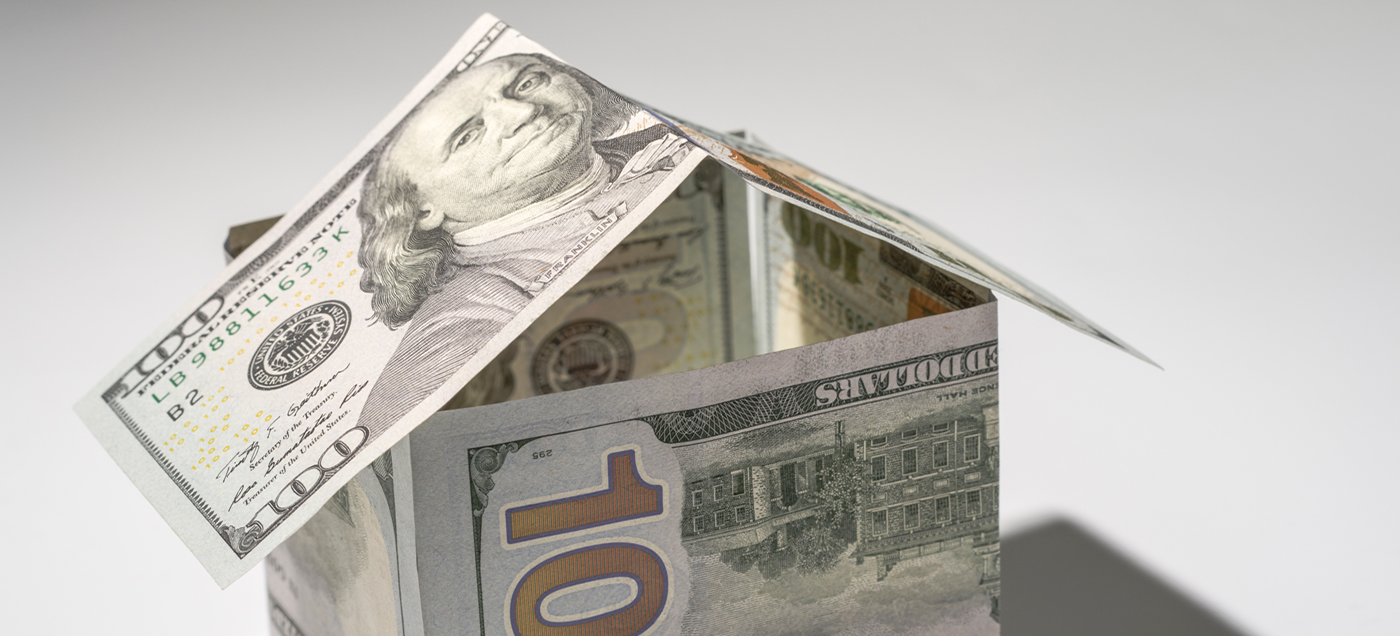Residential Real Estate News

U.S. Median Home Price Jumps 23 Percent to $357,900 in Q2
Residential News » Washington D.C. Edition | By WPJ Staff | August 13, 2021 8:03 AM ET
An increase of $66,800 from one year ago
According to the National Association of Realtors latest quarterly housing report, persistent low-levels of housing inventory, combined with record-low mortgage rates spurring housing demand, have caused an increase in median sales prices for existing single-family homes in all but one of 183 measured markets during the second quarter of 2021. NAR's report also reveals that 94% of 183 U.S. metro areas also experienced double-digit price increases (89% in the first quarter of 2021).
The median sales price of single-family existing homes rose 22.9% to $357,900, an increase of $66,800 from one year ago. All regions saw double-digit year-over-year price growth, which was led by the Northeast (21.8%), followed by the South (21.0%), West (20.9%), and Midwest (17.1%).
"Home price gains and the accompanying housing wealth accumulation have been spectacular over the past year, but are unlikely to be repeated in 2022," said Lawrence Yun, NAR chief economist.

"There are signs of more supply reaching the market and some tapering of demand," he continued. "The housing market looks to move from 'super-hot' to 'warm' with markedly slower price gains."
That said, 12 metro areas did report price gains of over 30% from one year ago, eight of which are in the South and West regions, including Pittsfield, Mass. (46.5%); Austin-Round Rock, Texas (45.1%); Naples-Immokalee-Marco Island, Fla. (41.9%); Boise City-Nampa, Idaho (41%); Barnstable, Mass. (37.8%); Boulder, Colo. (37.7%); Bridgeport-Stamford-Norwalk, Conn. (37.1%); Cape Coral-Fort Myers, Fla. (35.6%); Tucson, Ariz. (32.6%); New York-Jersey City-White Plains, N.Y.-N.J. (32.5%); San Francisco-Oakland-Hayward, Calif. (31.9%); and Punta Gorda, Fla. (30.8%). Yun notes that home prices are increasing sharply in the San Francisco and New York metro areas.
Over the past three years, the typical price gain on an existing single-family home totaled $89,900, with price gains in all 182 markets. In 46 out of 182 markets, homeowners typically experienced price gains of over $100,000. The largest price gains were in San Francisco-Oakland-Hayward, Calif. ($315,000); San Jose-Sunnyvale-Sta. Clara, Calif. ($294,000); Anaheim-Sta. Ana Irvine, Calif. ($279,500); Barnstable, Mass. ($220,600); and Boise-City-Nampa, Idaho ($206,300).
With home prices rising, the monthly mortgage payment on an existing single-family home financed with a 30-year fixed-rate loan and 20% down payment rose to $1,215. This is an increase of $196 from one year ago. The monthly mortgage payment grew even as the effective 30-year fixed mortgage rate decreased to 3.05% (3.29% one year ago). Among all homebuyers, the monthly mortgage payment as a share of the median family income rose to 16.5% in the second quarter of 2021 (14.0% one year ago).
"Housing affordability for first-time buyers is weakening," Yun explained. "Unfortunately, the benefits of historically-low interest rates are overwhelmed by home prices rising too fast, thereby requiring a higher income in order to become a homeowner."
Among first-time buyers, the mortgage payment on a 10% down payment loan jumped to 25% of income (21.2% one year ago). A mortgage is affordable if the payment amounts to no more than 25% of the family's income.
In 17 metro areas, a family needed more than $100,000 to affordably pay a 10% down payment mortgage (14 metro areas in 2021 Q1). These metro areas are in California (San Jose-Sunnyvale-Sta. Clara, San Francisco-Oakland-Hayward, Anaheim-Sta. Ana-Irvine, San Diego-Carlsbad, Los Angeles-Long Beach-Glendale), Hawaii (Urban Honolulu), Colorado (Boulder, Denver-Aurora), Washington (Seattle-Tacoma-Bellevue), Florida (Naples-Immokalee-Marco Island), Connecticut (Bridgeport-Stamford-Norwalk), New York (Nassau, New York-Newark-Jersey City), Massachusetts (Boston, Barnstable), District of Columbia-Virginia-Maryland-West Virginia (Washington-Arlington-Alexandria), and Oregon-Washington (Portland-Vancouver-Hillsboro).
There were only 84 metro area markets in which a family needed less than $50,000 to afford a home, down from 104 markets in 2021 Q1. The most affordable markets - where a family can typically afford to buy a home financed with a 10% down payment with an income of $25,000 or less - are in the Rust Belt areas of Youngstown-Warren Boardman, Ohio ($24,401); Peoria, Illinois ($24,013); Cumberland, Maryland ($23,773); and Decatur, Illinois ($21,481).
"Housing supply will be critical in moderating the growing housing costs and rising rents," Yun said. "Any disincentive to produce more housing inventory, such as extending the eviction moratorium, will only worsen the current shortage," Yun said.
Yun noted that NAR has requested "expeditious release" of rental subsidy funds in order to assist those who may be facing eviction.
Sign Up Free | The WPJ Weekly Newsletter
Relevant real estate news.
Actionable market intelligence.
Right to your inbox every week.
Real Estate Listings Showcase
Related News Stories
Residential Real Estate Headlines
- Las Vegas Area Home Prices Uptick 4.3 Percent Annually in March
- Single-Family Rent Growth in U.S. Trends Upward in 2025
- U.S. Mortgage Rates Tick Down Post Trump Tariffs Commencement
- President Trump's 'Liberation Day' Tariffs Potential Impact on the U.S. Housing and Mortgage Markets
- Baby Boomers Biggest Cohort of U.S. Home Buyers in 2025 as Millennials Decline
- U.S. Monthly Housing Payments Hit Record High in 2025
- U.S. Pending Home Sales Uptick in February
- Global Prime Residential Rent Slowdown Continued in Late 2024
- Ireland Home Price Inflation Hits 8 Year High in Early 2025
- Existing Home Sales in America Uptick in February
- Great Miami Area Residential Sales Decline 15 Percent Annually in February
- Mortgage Rates Uptick in Mid-March, Ending 9-Week Decline in U.S.
- World Property Ventures Builds the Future of Real Estate with New Funding Round
- U.S. Builder Sentiment Declines Amid Economic Uncertainty and Rising Costs
- Black Homeownership Rates in U.S. Enjoy Largest Annual Increase of All Racial Groups
- Wealthy Renters Are Taking Over More of the U.S. Rental Market
- If U.S. Congress Does Not Extend NFIP Soon, Thousands of Daily Home Closings Impacted
- U.S. Mortgage Applications Spike 11 Percent in Early March
- Greater Palm Beach Area Residential Sales Rise in Early 2025
- New Apartments in U.S. Are Leasing at Slowest Pace on Record
- U.S. Mortgage Rates Drop to 4 Month Low in March
- Overall U.S. Mortgage Delinquency Rates Dip in December
- New Tariffs on Canada, Mexico to Impact U.S. Homebuilder Input Costs
- Monaco's Property Market: A Tale of Two Cities
- U.S. Home Purchase Cancellations Surge, 1 in 7 Sales Getting Canceled
- U.S. Pending Home Sales Hit Historic Low in Early 2025
- Greater Miami Area Residential Sales Dip in January
- Governor DeSantis Supports Ending Property Taxes in Florida
- WPV Aims to Become the Berkshire Hathaway of Real Estate Tech
- U.S. Home Sales Slump Continues in January
- Average Americans Spend 38 Percent of Monthly Income on Mortgage Payments
- Switzerland's Safe-Haven Appeal Grows with World's Wealthy Homebuyers
- U.S. Builder Confidence Rapidly Declines in February
- Las Vegas Home Sales Rise 6.7 Percent Annually in January, Condo Sales Dip
- Homebuyer Demand in America Drops to 5-Year Low in Early 2025
- Ownership More Affordable Than Renting in Most U.S. Markets
- The World's First Global Listings Service Launches, Called a GLS
- Home Prices Continue to Rise in 89 Percent of U.S. Metros in Late 2024
- Global Luxury Residential Prices Showed Gradual Improvement in Late 2024
- U.S. Construction Hiring Rate Drops to Lowest Levels in 5 Years





